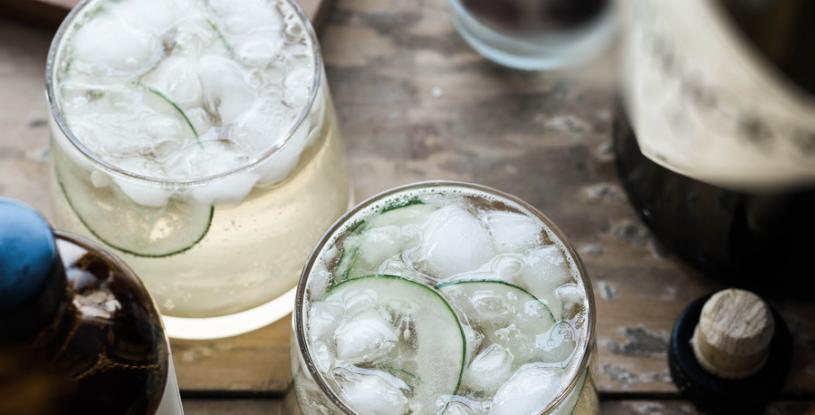Gin is like an old friend. Reliable, familiar. Supportive of many iterations of the cocktail.
Yes, gin is here to stay, according to the Distilled Spirits Council of the United States (DISCUS). In 2020, year-over-year sales of 9-liter cases rose 4.2% to more than 10 million. Revenue to gin suppliers increased 5.9% to $972 million.
“Thanks to the humble juniper berry, gin has a delightful subtle flavor with versatility,” DISCUS says. “America’s thirst for gin lies in the popularity of the many fine cocktails highlighted by the revival of the cocktail renaissance. Gin’s pleasurable taste and versatile flavors make it a perfect base for any classic or complex mixed drink.”
This mainstay of the drinking experience – in traditional drinks like the Tom Collins or early versions of the Martini – tends to fall largely into the “value” category. Last year, value brands accounted for 55.6% of U.S. gin volume by price.
But two categories in the “premium” tier, premium and high-end premium, together generated nearly 42% of gin volume by price: 28.3% for high-end premium and 13.5% for premium. Premium gins have been on the upswing since the late 2010s, offering spirits-makers higher margins that offset lower sales volumes, while providing cocktail enthusiasts a more interesting experience.
Craft gins and their fresh takes with botanicals are the star, thanks to consumer interest in premium gin brands that embrace innovation. They also may fall under the increasingly popular “better for you” umbrella that covers white spirits, according to Mintel.
During the pandemic, people beefed-up their bars at home with premium spirits when they were unable to visit their favorite bars. This trend applied to gins, and it’s possible that these consumers now will seek new experiences with premium gin cocktails as they return to evenings out.
Today’s Gin Trends
Gins also can benefit from the RTD cocktail craze, another avenue for innovation with premium gins.
Then there are sought-after “aged” gins, another example of an old practice adopted and modified for 21st century tastes. Two hundred years ago, gin was stored and transported in wooden barrels. That changed when gin could be sold in glass bottles. In the mid- 2000s, creative distillers wanted to impart unique flavors to their gins and took up the practice of resting, or “aging” gin in barrels that had already been used to age other types of alcohol. These can be charred new oak barrels used for bourbon or rye, or the wooden casks used to age sherry, scotch or cognac. Gin spends less time in the barrel but emerges with an additional layer of flavor that gin experts often suggest lends to drinking neat or on the rocks. But there are many creative cocktail recipes with aged gin as their basis, such as the Gin is In website’s recipe book Aged Gin Cocktails: 25 Cocktail’s for Gin’s Newest Style.
Regardless of the trend, the basis for a successful gin launch is a quality spirit. MGP is the largest maker of distilled gin in the United States, serving brands at all price points with myriad options. An aspiring brand can select an existing gin – or combine it with another – or start from scratch to create a signature gin.
Starting in 2016, MGP developed an assortment of gins that, in addition to juniper, highlighted botanical profiles of cucumber, citrus berry, lemon-lime, and orange. These small batch products are primarily meant to be mixed and blended in conjunction with its heritage distilled gins to allow a craft distiller to customize their own brand. MGP facilitates this playful mix-and-match alchemy by sending prospective customers “gin kits” with small amounts of each gin and encouraging them to delight in the endless possibilities of combinations.
Or, they may want to choose from more than 30 botanicals and oils available in MGP’s botanicals workshop to help create something special.
As MGP’s Lead Master Distiller Matt Greeno says, it’s all about helping customers “gin it to win it.”

